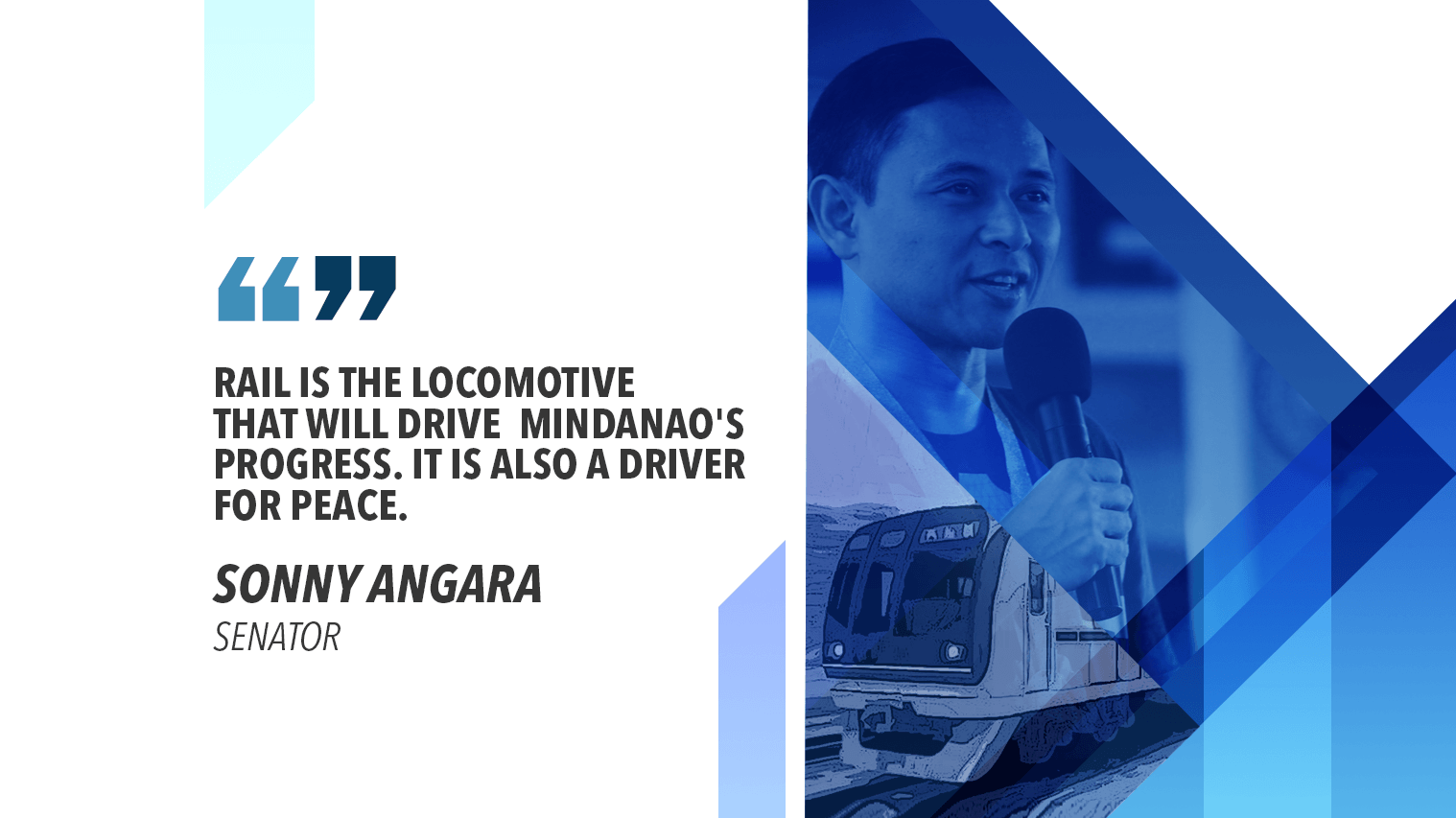With the construction of the first railway in Mindanao finally happening this year, reelectionist Senator Sonny Angara reiterated his proposal to create the state-owned Mindanao Railways Corp. that would oversee the efficient operation and maintenance of the future train system in the country’s second largest island.
Angara said the proposed “MindaRail” would serve as an instrumentality of government in providing a railway system that would potentially bring peace, economic development and poverty reduction in Mindanao.
“Mindanao and its people will get to experience long-overdue progress.”
“After years of conflict and neglect, Mindanao and its people will get to experience long-overdue progress once the railway system is completed,” said the seasoned legislator.
“A train system is the ticket out of poverty for many of them.”
The veteran lawmaker made the statement as he welcomed the assurance from the Department of Transportation (DoTR) that the actual construction work for the first phase of the much-awaited Mindanao Railway Project will start in the fourth quarter of 2019.
The 102-kilometer railway would link the cities of Tagum, Davao and Digos after its construction over the next three years. The DoTR aims to begin operations of the railway by 2022.
In 2016, the senator filed Senate Bill 137 seeking to establish MindaRail, which would have a capital stock of P1 billion and create an 11 member board, all to be appointed by President Rodrigo Duterte. MindaRail will have its head office in Davao City.
Once completed, Angara said the Mindanao train system will allow the island’s urban centers and growth corridors to be linked by rail.
“Rail is the locomotive that will drive Mindanao’s progress. It is also a driver for peace because as communities become interconnected, economies are linked, growth spreads, and travel brings cultural exchanges,” Angara said.
He said the train service should be capable of ferrying not just people but also cargo as the island is an agriculture powerhouse producing, by last count, half-a-trillion pesos of farm produce a year.
In 2017, Mindanao had the second biggest contribution to the country’s total agricultural production at 32.58 percent. By subsector, the shares were 38.85 percent for crops, 23.8 percent for livestock, 19.61 percent for poultry, and 31.38 percent for fisheries.
Home to about 24 percent of the country’s population, Mindanao also accounts for over 40 percent of the country’s poor.
“A train system is the ticket out of poverty for many of them,” Angara said, explaining that cheap, reliable and fast movement of goods would increase incomes and add value to produce.
He also noted that the island sits on a $310 billion worth of mineral deposits. “It also has vast potentials for clean energy such solar, wind, geothermal, and biomass.”
Angara has been filing a bill on MindaRail since his days in Congress as representative of the lone district of Aurora province.

